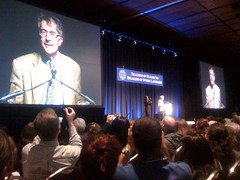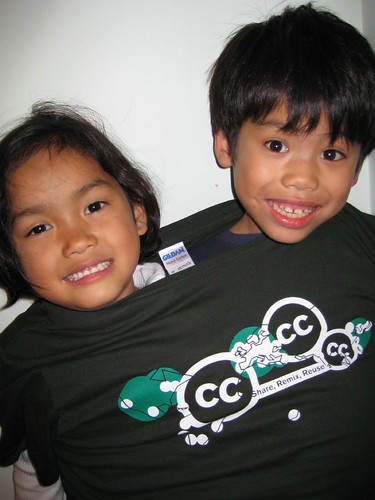
Intelligence - multiple, rather than singular
The mind is better thought of as eight or nine different computers in your brain.
The fourth or fifth country of the world is the country of immigrants.
What kinds of minds do we need to cultivate in the 21st century?
Globalization - global brands, electronic money transfer
The biological revolution - About brains and genes. Everyday we are learning more about the creature we are. If you are going to think about learning in the future, you need to know what is learning in the biological field.
The digital revolution
Lifelong learning - If we want to continue working, we need to keep education ourselves.
The five minds of the future:
The disciplined mind - Working steadily and improving. Becoming an expert in a profession, craft, art, or end up unemployed or working for someone who is an expert (the task of work). Keeping up.Learning major way of thinking. People think discipline is just learning a lot of stuff. It is a waste of time to memorize things in a subject matter. Learning to think beyond subject matter is never substituted by an electronic device.
The Synthesizing Mind - scads of information, especially on the web; we need to develop "synthesis 101" for teachers and students;Aristotle was probably the first great synthesizer. With information overload, we have to decide what to pay attention to, what to ignore, put it together in a way that makes sense to you. You have to communicate your synthesis to other people. We need to synthesize ourselves and we need to teach our students how to do that.
The creating Mind - The mind that breaks new ground, comes up with new solutions, goes beyond the known, thinks outside the box. Creativity involves thinking outside the box, but you cannot be creative unless you have the box (the discipline and the capacity to synthesize)!The secret is to begin to mastering when you are young and the most innovation occurs when people are very young. Creators are willing to take up new things and they don't mind failing. "I regard every defeat as a new opportunity".
Discipline is going deeply into things and creativity is stretching.
The Human Sphere (beyond cognitive in usual sense)
The Respectful Mind - treating other human beings with respect. Diversity is a fact of life with mixed population. Trying to put yourself in other people's place. Not being parochial. Thinking beyond your own skin. (No Cigar category - kiss up, kick down;no bad jokes; not just mere tolerance; respect with too many conditions). Example of Nelson Mandela (watch Invictous).
The Ethical Mind - One which goes beyond a person as himself/herself. Acting appropriately in different roles. Responsibilities as a professional and citizen. How does this plya out in a community like school?
Book: Good Work
Excellent, expert, disciplined, high quality
Ethical, socially responsible, moral
Engaging - meaningful, intrinsically, motivated
Excellence>>>>Ethics>>>Engagement (ENA instead of DNA)
Good Work with young people (Book: Making good - study of American Youth) - disturbing results:
young people know the right thing to do: they want to be good workers, but we can't affort to be ethical now because now it is very competitive with students who are not being fair, cheat...Some day they want to be good workers, not now. We want to be good workers, but don't push us now. Howard and researchers are tyring to promote good work using digital (The good play project -
http://www.goodworkproject.org/research/digital.htm)
Five minds in a Digital Age
discipline - depth loses out out to breadth
synthesis - can one organize the deluge of information?
Creativity - web 2.0 is promising, but many young people are risk averse and carrerist
Respectful/Ethical - perhaps to inner circle but not necessrily to the wider community, how to become a cyber citizen (questions of digital footprint, identity).
What are our roles as educators in nurturing the five minds?
- Awareness of these five minds
- examples from history or current events
- Modeling and showing positive examples and bad examples (no cigar - calling attention to the consequences)
- the five minds don't fit together as a jigsaw. There might be conflict.
Thoughts for Language Teachers
- Keep in mind the global, connected world. Learning how to learn.
- explore the assumptions in the countries of origin of your students and have them share their views of creativity, respect, ethics...
- Use the web to provide examples from different societies
- Model the kinds of minds that you admire and that you hope your students to exhibit.
The first three minds are cognitive (disciplined, synthesize - the box - creating ming . The last two kinds of mind (respectful, ethical) - thinking about our responsibilities.
http://pzweb.harvard.edu
http://goodworktoolkit.org
http://howardgardner.com












